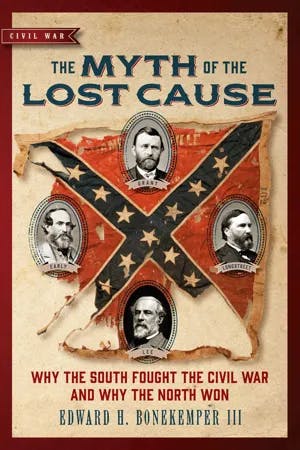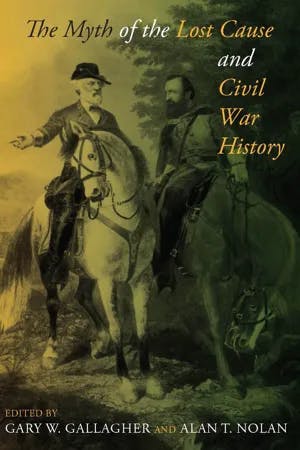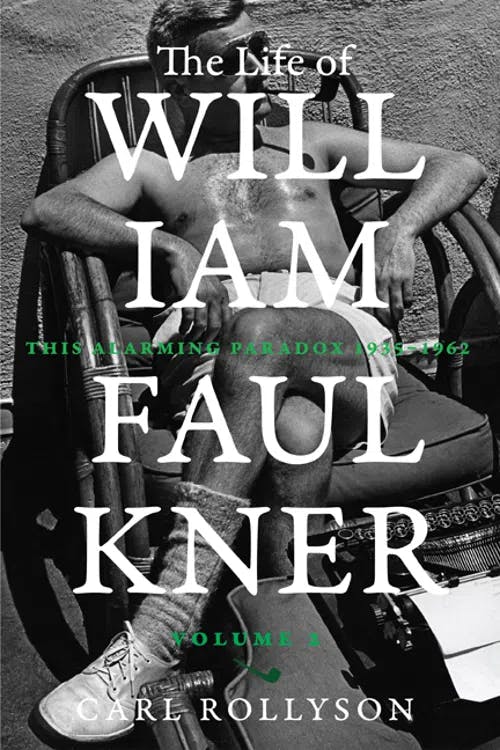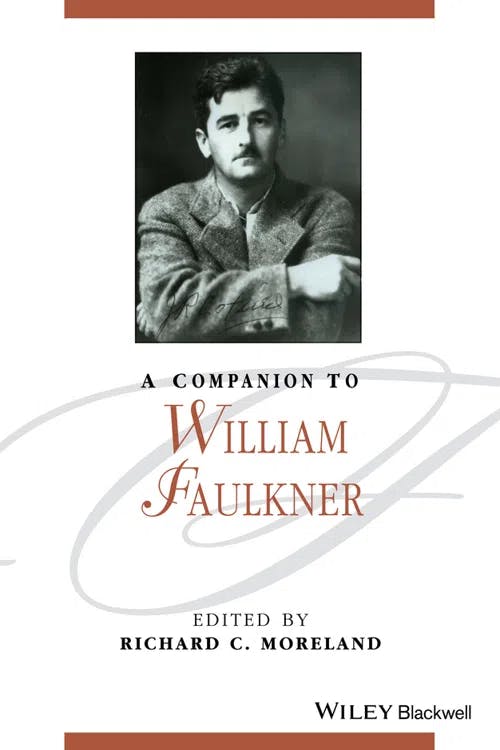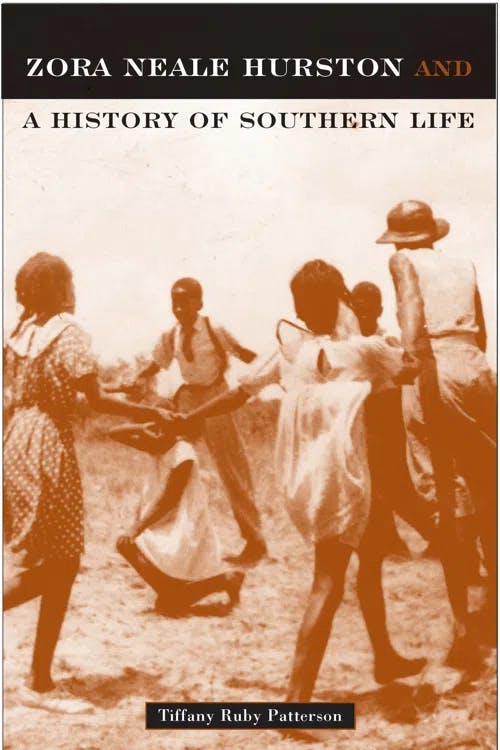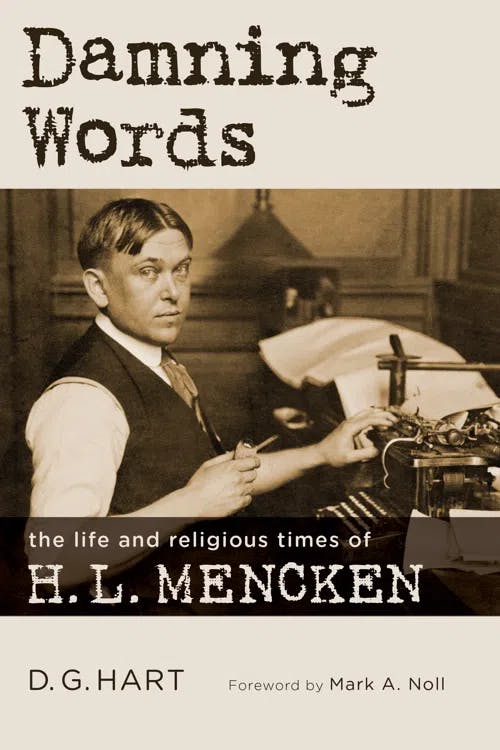What is the Southern Renaissance?
MA, History (University of Edinburgh)
Date Published: 09.01.2024,
Last Updated: 09.01.2024
Share this article
Definition and origins
In the 1920s and 1930s, there was a rejuvenation of literature in the American South in what became known as the Southern Renaissance. This renaissance ushered in a new understanding of what it meant to be Southern as these writers reflected on their lives and the lives of those around them, embracing difficult conversations and themes. These writers sought to criticize Southern culture and intellectual life, especially as it related to conservatism, all while exploring the uniqueness and diversity of life in the South.
Before the Southern Renaissance, much of Southern literature reflected on the “Lost Cause” in the South. According to Edward H. Bonekemper, the “Myth of the Lost Cause” was propagated by the Southern Historical Society, formed in 1868-1869 (The Myth of the Lost Cause, 2015). The Myth was developed in the midst of the reality of shell-shocked and poor Southerners who sought to not only reflect on what they perceived as the bravery of Confederate leaders and soldiers but also to come to terms with the Confederate loss and to rationalize slavery. The Confederate States of America, or the Confederacy, refers to the eleven states in the South that seceded from the Union between 1860-1861. These states acted as a separate government and fought the Union army during the American Civil War until the Confederacy was defeated in 1865:
[...] a coterie of disappointed Southerners, aided by many other “conveniently forgetful” and “purposely misleading” comrades, spent three decades after the Civil War creating the Myth of the Lost Cause [...] The Myth is a collection of fictions, lies, and component myths that purport to explain why much of the South seceded from the Union and why the Confederacy lost the Civil War. (Bonekemper, 2015)
Edward H. Bonekemper
[...] a coterie of disappointed Southerners, aided by many other “conveniently forgetful” and “purposely misleading” comrades, spent three decades after the Civil War creating the Myth of the Lost Cause [...] The Myth is a collection of fictions, lies, and component myths that purport to explain why much of the South seceded from the Union and why the Confederacy lost the Civil War. (Bonekemper, 2015)
As noted by Bonekemper, this Myth is important because it dominated Civil War historiography for most of the next 150 years. Historical romances based in the Confederate States of America were prominent in Southern literature, with a focus on the themes of loyalty and heroism of the Confederate army and civilians in the South. The culture of the Antebellum Period (the period before the Civil War began, when slavery was prevalent in the southern United States), was reflected upon by white, Southern writers who illustrated genteel culture in the South before the war. In The Myth of the Lost Cause and Civil War History (2000), Gary W. Gallagher and Alan T. Nolan explain that writer LaSalle Corbell Pickett, widow of Confederate general George E. Pickett, is an example of a Southern literary figure who fostered a romanticized vision of plantation life before the war, as well as a romantic view of the Confederacy:
[LaSalle Corbell Pickett’s] short stories, fiction, poems, lectures, “official histories,” and interviews with famous contemporaries all promoted the basic tenets of the Lost Cause myth. Her published writings and lectures repeatedly stressed the South’s right of secession, the righteousness of the “cause,” the valor of Confederate soldiers, the devotion of Southern women, and the loyalty of the childlike slaves. (2000)
Edited by Gary W. Gallagher & Alan T. Nolan
[LaSalle Corbell Pickett’s] short stories, fiction, poems, lectures, “official histories,” and interviews with famous contemporaries all promoted the basic tenets of the Lost Cause myth. Her published writings and lectures repeatedly stressed the South’s right of secession, the righteousness of the “cause,” the valor of Confederate soldiers, the devotion of Southern women, and the loyalty of the childlike slaves. (2000)
As writers like Pickett romanticized the Antebellum South, national memory was distorted as readers believed in the misrepresented true origins of the war. Historians argue that the influence of the “Lost Cause” on Southern literature dwindled after WWI, due to modernization efforts in the South. By the time the Southern Renaissance came around in the 1920s, Southern writers began to reflect on how the South was evolving.
Themes in Southern Renaissance literature
Major themes within literature coming out of the Southern Renaissance reflect the South’s evolving society. One theme includes the South’s conservative culture, especially regarding family life and religion. Along with this, the literature reflects on identity and individualization in an often community-focused South.
Another theme prevalent in Southern Renaissance literature includes history, especially regarding slavery and Reconstruction (the period after the Civil War when the United States had to rebuild, reunify, and create a society in which emancipated slaves were given equal rights and representation). As noted by Sarah Gardner in Reviewing the South (2017), the writers are critical of the “Lost Cause Myth” and the nostalgic history of the Antebellum Period:
No longer exclusively defensive and nostalgic, they assumed a critical and distancing perspective on their homeland. They challenged the sentimentalist stories of Thomas Nelson Page and Joel Chandler Harris, the moonlight and magnolia romance about the Old South, but they also rejected the explicit racism of Thomas Dixon, whose turn-of-the-century novels The Leopard Spots and The Klansman advocated white supremacy and the rule of the Darwinian elite in the “New South.”
Sarah Gardner
No longer exclusively defensive and nostalgic, they assumed a critical and distancing perspective on their homeland. They challenged the sentimentalist stories of Thomas Nelson Page and Joel Chandler Harris, the moonlight and magnolia romance about the Old South, but they also rejected the explicit racism of Thomas Dixon, whose turn-of-the-century novels The Leopard Spots and The Klansman advocated white supremacy and the rule of the Darwinian elite in the “New South.”
A third theme recognized in Southern literature is the theme of race. These writers were able to discuss race relations in the South, providing a glimpse into how racism was still recognized in the South, despite the Civil War ending decades before. The writers explore themes of racist abuse directed towards African Americans, including the false accusations they faced and the harsh conditions they endured at work:
They wrote about native-born union organizers who threatened to overturn the industrial-capitalist order that had kept workers mired in poverty. They wrote about the lynchings of African American men wrongly accused of crimes. And they wrote about the insuperable odds faced by sharecroppers and tenant farmers who struggled to eke out the barest of existences. (Gardner, 2017)
Southern writers also captured both the sexist and racial abuse African American women were subjected to. Specifically, Southern Renaissance writers described African American women as being victims of sexual abuse fuelled by racism, especially in the workplace:
Renaissance writers ventured out beyond the plantation big house and into the seamy underbelly of the cotton mills or into “Niggertown.” They wrote about the rapaciousness of white bosses who sexually abused their female African American workers. (Gardner, 2017)
The literature within the Southern Renaissance embraced not only new subjects but also subjectivity, as these writers recognized the faults of the “Lost Cause” and sought to redefine what it meant to be a Southerner.
Leaders of the literary renaissance
Within this literary renaissance in the South, writers not only reflected on themes such as racism and conservatism, but they also began to experiment with how they wrote. These writers experimented with form, adopting modernist literary writing techniques like blending the likes of poetry, prose, and folklore, all in one piece of literature. They embraced such poetic inventions as free verse. These writers mixed genres and even experimented with stream of consciousness, a narrative method in which the character’s thought processes are indicated through interior monologue, oftentimes with the character leaping between thoughts. Punctuation is rarely present in this form of narration. Stream of consciousness allows the reader to participate in the literature, blurring the division between the character and the reader. By embracing new forms of writing, these writers were creating a redefined image of the South.
In the following section, we will look at three literary figures in the Southern Renaissance who embraced modern literary techniques and reflected on the moral dilemmas of the Old South: William Faulkner, Zora Neale Hurston, and Robert Penn Warren.
William Faulkner and Absalom, Absalom!
Born in New Albany, Mississippi in 1897, William Faulkner wrote poems, novels, and short stories mostly based in his fictional county Yoknapatawpha County, inspired by Lafayette County, Mississippi, a region where Faulkner spent most of his life. He won the Pulitzer Prize for Fiction for his novels A Fable (1954) and The Reivers (1962) and is known as one of the greatest Southern writers of all time. He is also seen as a leader in the Southern Renaissance. In much of his work, Faulkner focuses on a post-Civil War South as his characters grapple with morality in a stifling, conservative society. He considers the themes of race relations, Southern traditions and society, trauma, and tragedy, among other themes, all discussed through his psychoanalytic prose and stream-of-consciousness writing style.
As a Southern Renaissance writer, Faulkner grappled with the South’s past and present and focused on truth rather than myth. According to Carl Rollyson in The Life of William Faulkner (2020), Faulkner focused much of his work on the South’s dark history and also on the South’s position in an ever-changing world:
After the publication of Light in August in 1932, race and history were no longer a given, a prologue to William Faulkner’s life and work, but instead became a problematic part of his inheritance as a southerner and as a writer with a claim on the world’s attention. He had to write a new kind of history in which history itself is the intense focus of his attention, as in Absalom, Absalom!, Go Down, Moses, and Requiem for a Nun, or a community’s past had to be retold and reshaped and debated [...] A Fable applies the Yoknapatawpha novels’ approach to historical understanding to a world-changing event, the First World War, which motivated Faulkner in the 1920s to see his native region in terms of global events.
Carl Rollyson
After the publication of Light in August in 1932, race and history were no longer a given, a prologue to William Faulkner’s life and work, but instead became a problematic part of his inheritance as a southerner and as a writer with a claim on the world’s attention. He had to write a new kind of history in which history itself is the intense focus of his attention, as in Absalom, Absalom!, Go Down, Moses, and Requiem for a Nun, or a community’s past had to be retold and reshaped and debated [...] A Fable applies the Yoknapatawpha novels’ approach to historical understanding to a world-changing event, the First World War, which motivated Faulkner in the 1920s to see his native region in terms of global events.
One of Faulkner’s novels that encapsulates the themes of Southern Renaissance writing is Absalom, Absalom! (1936). The novel follows the story of Thomas Sutpen who in the early 1830s moves to Mississippi to become a wealthy family patriarch. The story of the Sutpen family comes alive as the character Quentin Compson narrates the story entirely in flashbacks to Shreve, his roommate at Harvard College. The rise and fall of the family’s history is illustrated with such themes as racism, the burden of Southern history, and family dysfunction, all present within the text.
The novel allegorizes the South as the title references the biblical story of Absalom, a son of King David who was killed as he fought his own father’s empire. The rise and fall of Thomas Sutpen can be compared to the rise and fall of the Southern plantation, as his unrealistic and idealistic visions of the South do not hold up against the changes happening around him. He is rigid in his ideas and morals, ultimately leading to his destruction, just as Southern plantation owners often remained steadfast in the preservation of their plantation’s legacy and this steadfastness destroyed their livelihood. As indicated by Richard C. Moreland in A Companion to William Faulkner (2017), the past remains present in Absalom, Absalom!, as the characters revisit old tales of the South, leading to a confusion of the truth as myth mingles with historic reality:
Quentin [the narrator] had not lived long enough to find a South where loving and hating were both possible, a space where he could somehow magically, simultaneously, be both the region’s judge and critic, lover and son. But Faulkner had experienced this South – he had imagined Quentin from just this kind of place. Faulkner, like the segregationists, wanted to halt time, to live in a past both mythical and historical, but his past was neither the Confederates’ Lost Cause antebellum pastoral nor the segregationists’ vision of 1920s Jim Crow paradise before the creeping intervention of the federal government began. His South was a place where white Southern liberalism grew in a middle ground between white Southern investment in a culture of segregation and black resistance.
Edited by Richard C. Moreland
Quentin [the narrator] had not lived long enough to find a South where loving and hating were both possible, a space where he could somehow magically, simultaneously, be both the region’s judge and critic, lover and son. But Faulkner had experienced this South – he had imagined Quentin from just this kind of place. Faulkner, like the segregationists, wanted to halt time, to live in a past both mythical and historical, but his past was neither the Confederates’ Lost Cause antebellum pastoral nor the segregationists’ vision of 1920s Jim Crow paradise before the creeping intervention of the federal government began. His South was a place where white Southern liberalism grew in a middle ground between white Southern investment in a culture of segregation and black resistance.
Faulkner’s position as a Southern Renaissance writer allows the reader to see his writing through the lens of a modernist writer reflecting on an ever-evolving society, a society which Faulkner himself had to adjust to and embrace.
Zora Neale Hurston and Their Eyes Were Watching God
Zora Neale Hurston was an American author born in Notasulga, Alabama in 1891, who illustrated the African American experience in the South during the early 20th century. She reflected on racial tensions and the struggles she faced as a female African American writer. She is known as one of the most prolific voices of the Harlem Renaissance. Hurston dismantles the Myth of the Lost Cause by bringing to light gender issues, racial issues, and the struggles she and her community face in the South as Southern society begins to change and adapt to a modern world. As described by Tiffany Ruby Patterson in Zora Neale Hurston (2008), Hurston was heavily influenced by the history of the South, a history riddled with tragedy and racism:
For Hurston, everyday actions and interactions,while seemingly inconsequential, are actually set in motion by the complex interplay between the force of history and the creative efforts of those to whom Toni Morrison refers as “discredited” people [...] While “time and place have had their say” in the shaping of Hurston’s memories, neither has the last word in her self-fashioning. Hurston recognizes the constraints imposed by Jim Crow conditions and their northern counterparts on her life and work, but she is never deadened by them. Instead she presents herself as an active agent, an “I” irreducible to any of her many components.
Tiffany Ruby Patterson
For Hurston, everyday actions and interactions,while seemingly inconsequential, are actually set in motion by the complex interplay between the force of history and the creative efforts of those to whom Toni Morrison refers as “discredited” people [...] While “time and place have had their say” in the shaping of Hurston’s memories, neither has the last word in her self-fashioning. Hurston recognizes the constraints imposed by Jim Crow conditions and their northern counterparts on her life and work, but she is never deadened by them. Instead she presents herself as an active agent, an “I” irreducible to any of her many components.
Both the past and the present mingle within Hurston’s prose, creating complex tales fostering the reality of the plight of African Americans in the South.
Perhaps one of Hurston’s best-known and well-loved books is Their Eyes Were Watching God (1937, [2009]). Set in the early 20th century in Florida, this novel follows protagonist Janie Crawford as she matures from a voiceless woman into a self-assured and resilient one. Janie seeks to live outside of society’s terms and find a path in which she can feel free and spiritually strengthened. Themes of racial violence and the effects of trauma are illustrated through the character of Leafy and the story of her rape, harkening back to a past in which slave women were oftentimes raped by their masters and had to live with this trauma:
“She was only seventeen, and somethin’ lak dat to happen! Lawd a’mussy! Look lak Ah kin see it all over again. It was a long time before she was well, and by dat time we knowed you was on de way. And after you was born she took to drinkin’ likker and stayin’ out nights. Couldn’t git her to stay here and nowhere else. Lawd knows where she is right now. She ain’t dead, ’cause Ah’d know it by mah feelings, but sometimes Ah wish she was at rest.” (Hurston, Their Eyes Were Watching God, 1937, [2009]).
Zora Neale Hurston
“She was only seventeen, and somethin’ lak dat to happen! Lawd a’mussy! Look lak Ah kin see it all over again. It was a long time before she was well, and by dat time we knowed you was on de way. And after you was born she took to drinkin’ likker and stayin’ out nights. Couldn’t git her to stay here and nowhere else. Lawd knows where she is right now. She ain’t dead, ’cause Ah’d know it by mah feelings, but sometimes Ah wish she was at rest.” (Hurston, Their Eyes Were Watching God, 1937, [2009]).
With Hurston using the regional accent in the dialogue, Leafy’s experience as a rape victim and her subsequent alcohol abuse and mental health issues are made more poignant as the reader feels connected to the character of Leafy and her experience as a Southern African American. Hurston intermingles feminism with modernism as she illustrates changing gender roles in a society that is still reeling from the institution of slavery.
Robert Penn Warren, the Fugitives, and Southern Agrarians
An American novelist, poet, and critic, Robert Penn Warren was born in 1905 near the Tennessee-Kentucky border. He is known as a critical figure in the Southern Renaissance. He helped establish the American literary journal, The Southern Review, and was also a member of the Fellowship of Southern Writers. He won the 1947 Pulitzer Prize for his novel All The King's Men (1946, [2002]) as well as the Pulitzer Prize for Poetry in 1958 and 1979.
Warren’s All The King’s Men encompasses many aspects of Southern Renaissance literature as the novel follows governor Willie Stark in the Depression-era South, a South conflicted over changes in its conservative culture. Warren illustrates the need for people to not merely be observers of history, but to take part in the changes happening around them. According to Jonathan S. Cullick in Robert Penn Warren's All the King's Men (2018), Warren understood Southerners around him, depicting people who were still marred by the South’s grim history. He also shows how Southern politicians utilized Southerners’ conservative beliefs, fears, and prejudices against them for their personal gain:
Reaching back to the Civil War and taking the reader up to the brink of World War II, it is a novel about history and our use of the past. Fundamentally, though, the novel is about language. Politics is conducted through language. Demagoguery is a style of language. Populism is as much a manner of speaking as it is a political program. The novel intrigues us with its evolution of a politician who could not reach people through their intellects but learned how to move them by touching their beliefs, values, prejudices, and resentments. (Cullick, 2018)
Jonathan S. Cullick
Reaching back to the Civil War and taking the reader up to the brink of World War II, it is a novel about history and our use of the past. Fundamentally, though, the novel is about language. Politics is conducted through language. Demagoguery is a style of language. Populism is as much a manner of speaking as it is a political program. The novel intrigues us with its evolution of a politician who could not reach people through their intellects but learned how to move them by touching their beliefs, values, prejudices, and resentments. (Cullick, 2018)
Warren also contributed to the Southern Renaissance through his association with the Fugitives, a group of poets and writers at Vanderbilt University in Nashville, Tennessee. Warren and some of the members of this group later formed another group known as the Southern Agrarians. Their most famous work, the agrarian manifesto I'll Take My Stand (1930), sought to defend the South’s rural, religious, and conservative nature and denounce the influences of urbanization and modernization happening across the United States, especially in the South. They ultimately rejected modernity and were influenced by the writings of such Victorian authors as Thomas Carlyle.
According to Paul V. Murphy in The Rebuke of History (2003), while some of the writers in the group supported ideas related to the Myth of the Lost Cause and had a tendency to romanticize the culture and traditions of the South, Warren was different. He recognized both the good and evil in Southern history and believed in the possibilities of a changing Southern society:
For Warren, the past was altogether more ambiguous, containing both good and bad. He could neither identify with the past as unquestioningly as Davidson nor turn from it as completely as Allen Tate, for the southern heritage meant too much to him [...] Warren was a philosophical pragmatist, inspired by William James; he believed that human beings necessarily constructed their own identity and, in this way, defined moral value. Moral values are not given; they must be discovered and realized anew by each human being in a process of relentless testing, an “agony of will.” A confrontation with one’s own past and cultural history is integral to this process. (Murphy, 2003)
Paul V. Murphy
For Warren, the past was altogether more ambiguous, containing both good and bad. He could neither identify with the past as unquestioningly as Davidson nor turn from it as completely as Allen Tate, for the southern heritage meant too much to him [...] Warren was a philosophical pragmatist, inspired by William James; he believed that human beings necessarily constructed their own identity and, in this way, defined moral value. Moral values are not given; they must be discovered and realized anew by each human being in a process of relentless testing, an “agony of will.” A confrontation with one’s own past and cultural history is integral to this process. (Murphy, 2003)
Though he defends aspects of racial segregation in his contribution to the manifesto, later Warren recanted his views when he later wrote about the positives of the civil rights movement and published Who Speaks for the Negro? (1965), a collection of interviews with such civil rights leaders as Martin Luther King Jr. and Malcolm X.
Criticisms
A major critic of Southern literature was H.L. Mencken, an American writer, satirist, and critic born in 1880 in Baltimore, Maryland. He was known for criticizing the South’s conservative values and traditions. As described by D. G. Hart in Damning Words (2016), Mencken reflected on life in the South in his writings, deeming the “progress” of the South as a myth. Mencken referred to the South as “the Sahara of the Bozart,” as he believed that the South was a wasteland for intellect and culture:
Down there a poet is now almost as rare as an oboe-player, a dry-point etcher or a metaphysician. . . . Nearly the whole of Europe could be lost in that stupendous region of fat farms, shoddy cities and paralyzed cerebrums [...] And yet, for all its size and all its wealth and all the “progress” it babbles of, it is almost as sterile, artistically, intellectually, culturally, as the Sahara Desert. (Mencken, quoted in Hart, 2016)
D. G. Hart
Down there a poet is now almost as rare as an oboe-player, a dry-point etcher or a metaphysician. . . . Nearly the whole of Europe could be lost in that stupendous region of fat farms, shoddy cities and paralyzed cerebrums [...] And yet, for all its size and all its wealth and all the “progress” it babbles of, it is almost as sterile, artistically, intellectually, culturally, as the Sahara Desert. (Mencken, quoted in Hart, 2016)
It was not just the conservative values of the South that critics of Southern Literature took issue with. The fact that until the mid-20th century, African American authors were generally disregarded in the Southern canon as white, male Southern writers were recognized as the prime contributors to Southern literature and the Southern Renaissance, is significant. These African American Southern writers include the likes of Alice Dunbar Nelson, Arna Bontemps, and James Weldon Johnson, among many others. Also, as in the case of the Southern Agrarians, some of the Southern Renaissance writers did not openly denounce the institution of slavery and refrained from celebrating progress in the South.
Closing thoughts
The Southern Renaissance ushered in a new era of Southern writers focused on dismantling the Myth of the Lost Cause as they faced gender roles, Southern tradition, slavery, and the modern world head-on through their writings. They illustrated a South immersed in a new post-Civil War reality. With such writers as William Faulkner, Zora Neale Hurston, and Robert Penn Warren paving the way for the Renaissance, the complexity and diversity of people’s lives in the South came to the forefront of these texts as readers were exposed to a new style of Southern writing. The complexity was often presented through a stream of consciousness, allowing readers to investigate the interior minds of the characters and uncover the inner feelings, ideas, and behaviors of those within the text, especially as they relate to life in the South. No longer was there a harkening back to romanticized days of old in Southern writing but instead, an acknowledgement of a Southern society molded around a grim past with people coming to terms with its history. The legacy of the Southern Renaissance can be seen through writers such as Flannery O’Connor, Harper Lee, Reynolds Price, and Eudora Welty, among many others, all of whom illustrate inherited years of historical trauma in their texts and who are dedicated to uncovering the truth within their beloved region of the world.
Further reading on Perlego
Dixie Limited (2014) by Joseph R. Millichap
Creating a Confederate Kentucky (2010) by Anne E. Marshall
Burying the Dead but Not the Past (2012) by Caroline E. Janney
Your Heritage Will Still Remain (2017) by Michael J. Goleman
William Faulkner (2011) by John T. Matthews
Then and Now (2021) by Floyd C. Watkins
The Long Reconstruction (2013) by Frank J. Wetta and Martin A. Novelli
Zora Neale Hurston (2007) by Deborah G. Plant
What is the Southern Renaissance?
What themes are present in Southern Renaissance literature?
What is an example of Southern Renaissance Literature?
Who were the leaders of the Southern Renaissance?
Who were the Southern Agrarians?
What is a criticism of the Southern Renaissance?
Bibliography
Bonekemper, E. (2015) The Myth of the Lost Cause: Why the South Fought the Civil War and Why the North Won. Regnery History. Available at: https://www.perlego.com/book/784561/the-myth-of-the-lost-cause-why-the-south-fought-the-civil-war-and-why-the-north-won-pdf
Cullick, J. (2018) Robert Penn Warren’s All the King’s Men: A Reader’s Companion. The University Press of Kentucky. Available at: https://www.perlego.com/book/874553/robert-penn-warrens-all-the-kings-men-a-readers-companion-pdf
Davidson, D. et al (1930) I’ll Take My Stand: The South and the Agrarian Tradition by Twelve Southerners. Vanderbilt University Special Collection. Available at: https://collections.library.vanderbilt.edu/repositories/2/resources/994/collection_organization
Faulkner, W. (1936) Absalom, Absalom! Penguin Random House.
Faulkner, W. (1954) A Fable. Penguin Random House.
Faulkner, W. (1962) The Reivers. Penguin Random House.
Gallagher, G. and Nolan, A. (2000) The Myth of the Lost Cause and Civil War History. Indiana University Press. Available at: https://www.perlego.com/book/2429561/the-myth-of-the-lost-cause-and-civil-war-history-pdf
Gardner, S. (2017) Reviewing the South: The Literary Marketplace and the Southern Renaissance. Cambridge University Press. Available at: https://www.perlego.com/book/4221143/reviewing-the-south-the-literary-marketplace-and-the-southern-renaissance-19201941-pdf
Hart, D. (2016) Damning Words: The Life and Religious Times of H. L. Mencken. Wm. B. Eerdmans Publishing Co. Available at: https://www.perlego.com/book/2015495/damning-words-the-life-and-religious-times-of-h-l-mencken-pdf
Hurston, Z. N. (2009) Their Eyes Were Watching God. HarperCollins. Available at: https://www.perlego.com/book/582431/their-eyes-were-watching-god-pdf
Moreland, R. (ed.) (2017) A Companion to William Faulkner. Wiley. Available at: https://www.perlego.com/book/999261/a-companion-to-william-faulkner-pdf
Murphy, P. (2003) The Rebuke of History: The Southern Agrarians and American Conservative Thought. The University of North Carolina Press. Available at: https://www.perlego.com/book/539567/the-rebuke-of-history-the-southern-agrarians-and-american-conservative-thought-pdf
Patterson, T. R. (2008) Zora Neale Hurston and a History of a Southern Life. Temple University Press. Available at: https://www.perlego.com/book/2039878/zora-neale-hurston-and-a-history-of-southern-life-pdf
Rollyson, C. (2020) The Life of William Faulkner: This Alarming Paradox, 1935-1962. University of Virginia Press. Available at: https://www.perlego.com/book/1365276/the-life-of-william-faulkner-this-alarming-paradox-19351962-pdf
Warren, R. P. (2009) All The King’s Men. Harper Collins.
Warren, R. P. (1965) Who Speaks for the Negro? Penguin Random House.
MA, History (University of Edinburgh)
Hannah Hamill has a PGDE in Secondary Education (History) from the University of Glasgow and a Master’s degree in History from the University of Edinburgh. She also received a Bachelor’s degree in English from Belmont University. Her research interests include The Troubles in Northern Ireland, Medieval Britain, the American Civil War, and immigration to the southern United States. Her dissertation examined loyalist and republican women’s involvement during The Troubles.

